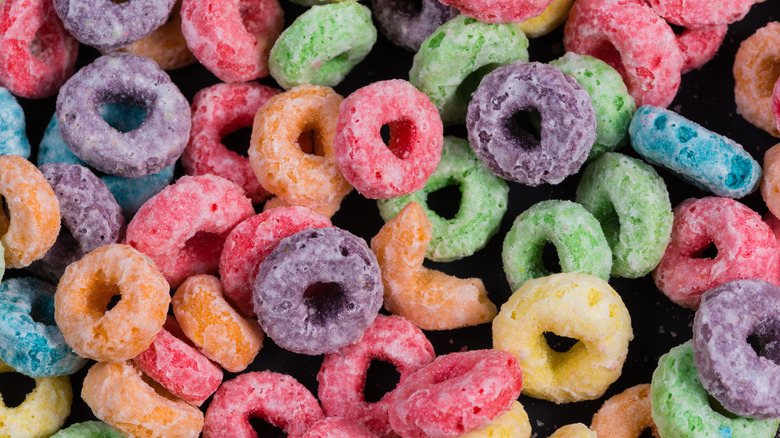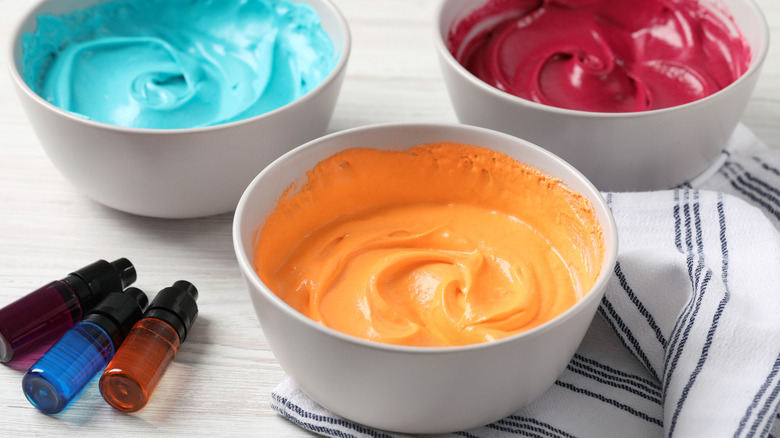The Controversy Over Blue Froot Loops, Explained
Sugary breakfast cereals are a childhood favorite no matter where you are, but you might be surprised to find that a bowl of Froot Loops in the United States looks strangely different from its Canadian or European counterparts. That's because these Froot Loops are missing the blue pieces entirely, and, in fact, use totally different food dyes than the American cereal. For years, controversy has surrounded the use of artificial food coloring that gives popular products like Froot Loops their signature vibrant hues, and in some countries, a combination of stricter regulations and shifting consumer preferences has led to a change in ingredients.
To understand the controversy, it's necessary to first examine why international markets use different food dyes. Some artificial food coloring detractors claim that the four dyes used in Froot Loops cause serious health issues and are banned abroad as a result, but the truth is more complicated. Kellogg's uses Red 40, Yellow 5, Blue 1, and Yellow 6 to create its colorful cereal, and as of recent years, there is no nation on record that outright bans these additives.
However, the E.U. does require a warning label on any product containing Yellow 6, Red 40, and Yellow 5, which states (via Lovdata) that these dyes "may have an adverse effect on children's activity and ability to concentrate." Additionally, the U.K. called for manufacturers to voluntarily stop using six food color additives in 2008 (which included those used in Froot Loops), and the Food Standards Agency published a report in 2011 suggesting alternative replacements.
How dangerous is artificial food coloring?
The real reason behind Froot Loops' color differences lies more in marketing than in the law. Even though there is no legal requirement for Canadian or European Froot Loops to change their recipes, Kellogg's stated (via Bloomberg News) that they found significantly better reception to cereals made with naturally sourced dyes in Canadian markets than in the U.S. Apparently, American consumers prefer their cereal to look the way it tastes: bright and artificial.
So, why no blue in the international version? Simply because there is no known natural alternative to approximate Froot Loops' blue. There are, however, a number of plant-based natural dyes used to create the Canadian cereal's more muted colors, like carrot, watermelon, and blueberry juice. Though there is a growing movement to eliminate artificial food dyes entirely (or at least to stop serving them to children), the jury is still out on their danger level.
Is there any truth to the rumors that these dyes cause medical problems like ADHD and cancer? Only a grain of it, according to current research. While no studies have definitively proven a link between these food dyes and the development of ADHD, a 2022 study published in Environmental Health showed increased hyperactivity in some children after the dyes were added to their diets. There is no present evidence that any of the food dyes used in Froot Loops cause cancer, though they stress that more research is needed.

